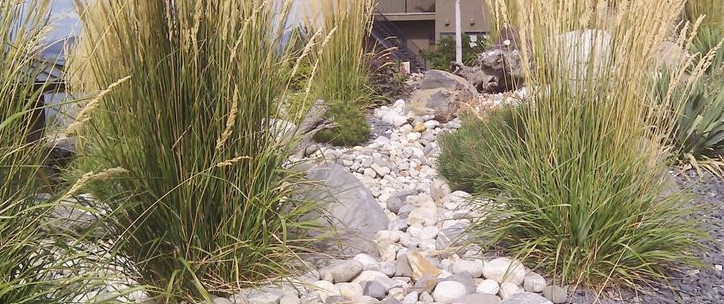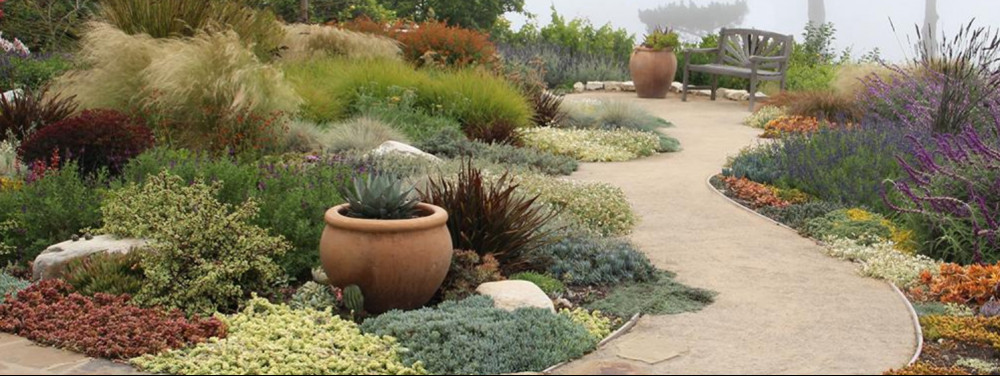
Amazon Services Affiliate Program Notice.
How to get that perfect green lawn?
Nothing is nicer than a thick, green lawn, especially if you have the knowledge on how to get one.
Just three things are necessary to grow a lush, green lawn: routine upkeep, frequent mowing, and fertilizing. To achieve the optimum effects, it is important to schedule these activities throughout the entire year. But before we start on that, we should know what we have.
Know Your Grass.
Most of the time, the grass is just….. there and it’s just….grass. It’s crucial to understand that there are roughly a dozen different varieties of turf grass, and what you see in your garden may actually be a blend of two or more different varieties.
The majority of the time, turf grass can be divided into two groups: grasses that thrive in warm climes and grasses that are better suited for regions of the country that suffer winter and considerable seasonal temperature variations.
Aside from choosing a grass that will thrive in your climate, there are additional factors to consider, such as pH, fertility, soil moisture, and environmental pressures.
Talking with your local nursery will cut to the chase and get the grass you need.
Test Your Soil.
Check the soil. Find out what characteristics your soil has next. Your grass kind and this might help you figure out what’s needed for optimal growth. Kits for testing soil are generally accessible.
The optimum soil will eventually depend on the type of grass you have, but as a general rule, you want a pH level of 6-7 that is slightly acidic and rich in nitrogen, phosphate, and potassium. Remember that warm-season grasses prefer a little lower pH than cool-season grasses. Aim to test your soil once a year to make sure there are enough minerals.
You can find out more about this at “PH Soil Testing Kits“
The Best Time to Water.

The best time to water your grass is early in the day. This enables the grass to undergo photosynthesis and the soil to efficiently absorb the water (any later and the sun will cause it to evaporate). If you water your lawn at night, it won’t be able to use the water you’re giving it since photosynthesis on the lawn depends on sunlight.
Adding moisture to the grass by watering at night also encourages the growth of lawn disease. When watering during a hot day, the majority of the water frequently evaporates before it can be absorbed.
Giving your lawn a deep watering is encouraged because light watering inhibits root growth and the roots will not be able to hold a lot of moisture.
Fertilize Your Lawn.
Grass may be fertilized fairly easily. Planning ahead is made easier and should take far less time if your grass is laid out in reasonable sections. Let’s begin.
Water your grass well for a few days before applying fertilizer. Your soil will be more likely to be prepared to “take” lawn fertilizer if you prepare it properly. And also water your lawn after you have applied fertilizer as it will help dissolve it and maximize its effect.
We have already tested your soil and discovered what characteristics your soil has.
The Correct Balance
Now that you are aware of what is missing, you may purchase the proper fertilizer. The majority of fertilizers contain nitrogen, potassium, and phosphorus, however, the components and quantities vary depending on the application. This means that you should choose a fertilizer that will balance your mineral levels. Some fertilizers contain weed killer, so if you don’t like using weed killer this is where you can decide on an alternative.
Fertilize your cool-season grass in the early spring and late fall. Warm-season grass, on the other hand, needs fertilizer more frequently during the summer. Follow the directions carefully because using too much fertilizer might damage your lawn and create burn marks.
If you don’t want to use chemicals in your yard, there are also natural options and you can find out a bit more here at “Manure is Good”. However, this is one situation where a more refined fertilizer would be more appropriate in my opinion.
Use The Best Tools.
Broadcast and drop are the two basic types of spreaders. Read on to find out more about spreaders and their ideal applications for your lawn. Set the spreader’s parameters. For proper coverage, each fertilizer product has a different spreader setting. Make sure you’re choosing the appropriate setting for your particular spreader by checking the bag or box. (More information is provided on the product sheet.)
Spreaders are used to get a uniform distribution of fertilizer across your lawn. When using a spreader treat it in the same way as you would a lawn mower. I normally start from the outside and work my way in making sure I overlap each “spreading lane-way”.
Products.
Scotts 76565 Turf Builder Classic Drop Spreader
Do Your Weeding.
This product comes with a sizable hopper that can carry grass seed and fertilizer, for up to 10,000 square feet. It offers maximum stability, maximum coverage, and maximum precision thanks to its heavy-duty structure. It has a 22-inch spread pattern and is pre-calibrated and ready to use. It comes completely put together, and you can purchase single or triple packs.


Scotts Turf Builder EdgeGuard Mini Broadcast Spreader


The Scotts Turf Builder EdgeGuard Mini Broadcast Spreader comes fully constructed, pre-calibrated, and has a fold-down handle for simple storage. EdgeGuard Technology, a trademark of Scotts, keeps grass products off of sidewalks, driveways, and other landscaping features. Ideal for treating smaller areas, this container holds up to 5,000 square feet of either grass seed or fertilizer.
Aerate Your Lawn.
If you want to keep your grass green, aerate your soil roughly once a year. The soil in your yard will eventually become compacted due to constant foot traffic. This strains the grass by making it harder for any roots to absorb oxygen and water. Your grass will flourish as a result of soil aeration since it will be able to breathe more easily.
Yard Butler ID-6C Manual Lawn Coring Aerator.

Older lawns can be revitalized with the Yard Butler while using less water and fertilizer. Aerators allow air, water, and fertilizer to reach your lawn’s roots while reducing compaction and un- flattening your lawn.
The steel is made of heavy-duty, rust-resistant powder coating and is exceptionally durable resulting in a long life for the aerator.
Aerating your soil encourages robust root growth, lessens water runoff, increases resistance to drought and heat stress, and aids in reducing the need for excessive amounts of grass supplements or fertilizers.
With this 37-inch yard aerator, you can take care of your lawn without hurting your back due to its great ergonomic design.
If you have hard, dry soil, pre-soaking the grass before employing this kind of lawn aerator is recommended.
Do Your Weeding.
Is your lawn overrun with weeds that are fully grown and you think you can’t get rid of them? Think again, the best thing to do is use a hand weeding tool. Not only will it remove the weeds, but it’ll also stop them from growing back too
A hoe can be useful for weeds with deep roots, such as dandelions and flowers because it goes right for the roots and eliminates any chance of regrowth.
If none of this is successful, we advise choosing pesticides or perhaps a complete soil renovation. The input from the nursery people, at this stage, is crucial
Mowing Your Lawn.( Husqvarna Mowbot)
One of the newest developments in lawn care is robotic mowers. Smart mower use typically results in grass that is much greener, healthier, and more resilient. By using a robotic mower, you can avoid problems with cross-contamination in your grass and use less fertilizer and water.
It will save your grass from experiencing cross-contamination issues if you use less fertilizer and water. Another thing to remember when cutting your lawn is to never cut more than 20% at one time. So you might need 2 or even 3 passes of the lawnmower to get your desired length of the lawn. Leave your clippings on the lawn when you have finished mowing as this will add natural nitrogen-rich fertilizer to your lawn and keep the grass green.
Final Thoughts.
If you use these suggestions, you will see the results of your efforts and the neighbors will quickly envy your yard and its lush green lawn.
Just keep in mind that regular upkeep is essential to maintaining a healthy lawn, so repeat the aforementioned procedures for long-lasting ongoing effects.
Stephen







My former boss didn’t listen to me when I told him that it’s not worth watering during the day at 40 degrees Celsius and that he should have done it in the morning. He didn’t listen to me, but he was surprised that his neighbor’s house was greener than his. Ha-ha Thank you for this detailed explanation. I’m sure your articles will be useful to many.
Thanks, Alisa,
Watering your oven would be just as effective as watering your garden through the lunchtime part of the day.
I am pleased you found the article useful and I hope your ex-boss no longer waters the garden through the peak hours of the day..
Regards
Stephen
A very in-depth post on looking after your grass! Definitely one I needed after the blazing hot summer we had here in the UK, which has left the grass frazzled and not at all in great shape. Although we are a country notorious for rain so I am sure we will get the growth back quickly. I for one would love to have moss as grass but I hear it takes a long time to get to this point. Maybe one day! I just love the feel of mosy grass on bare feet! Thanks for the advice on getting my lawn back to life! !
Hi Tigan,
The weather has been terrible this year in a lot of countries and it is not easy to keep your lawns in good condition throughout this. However, with a bit of work and still being ok for the environment, we can make our yard Christmas-ready.
Thanks.
Stephen